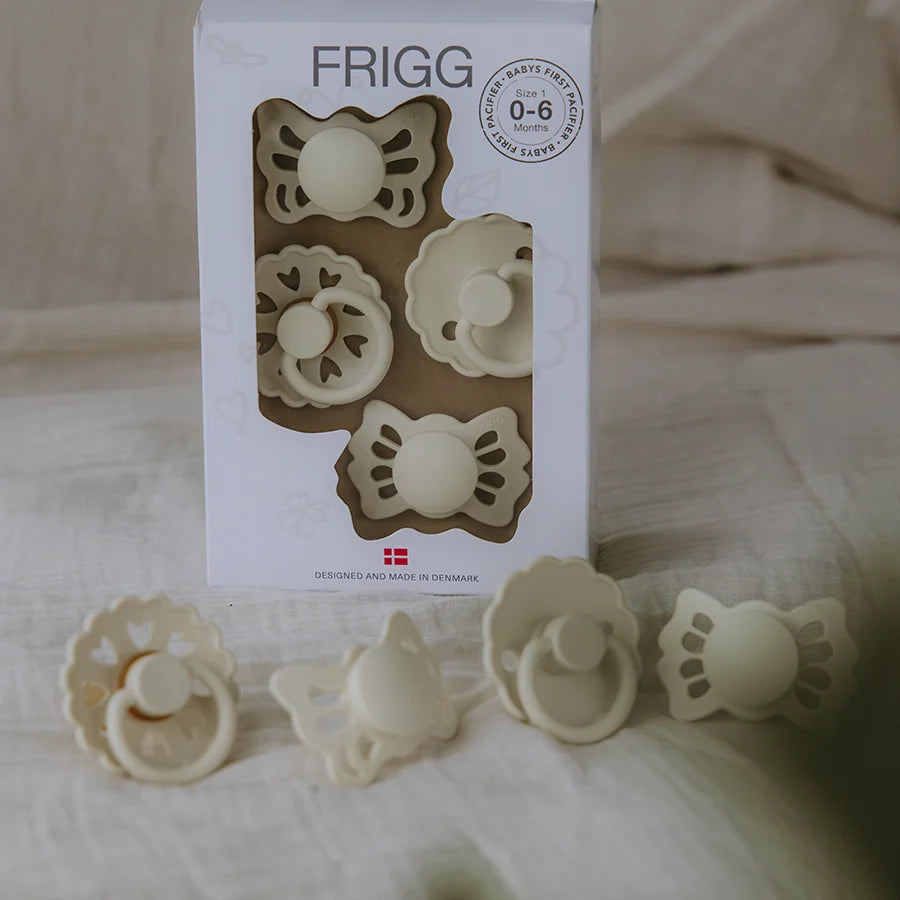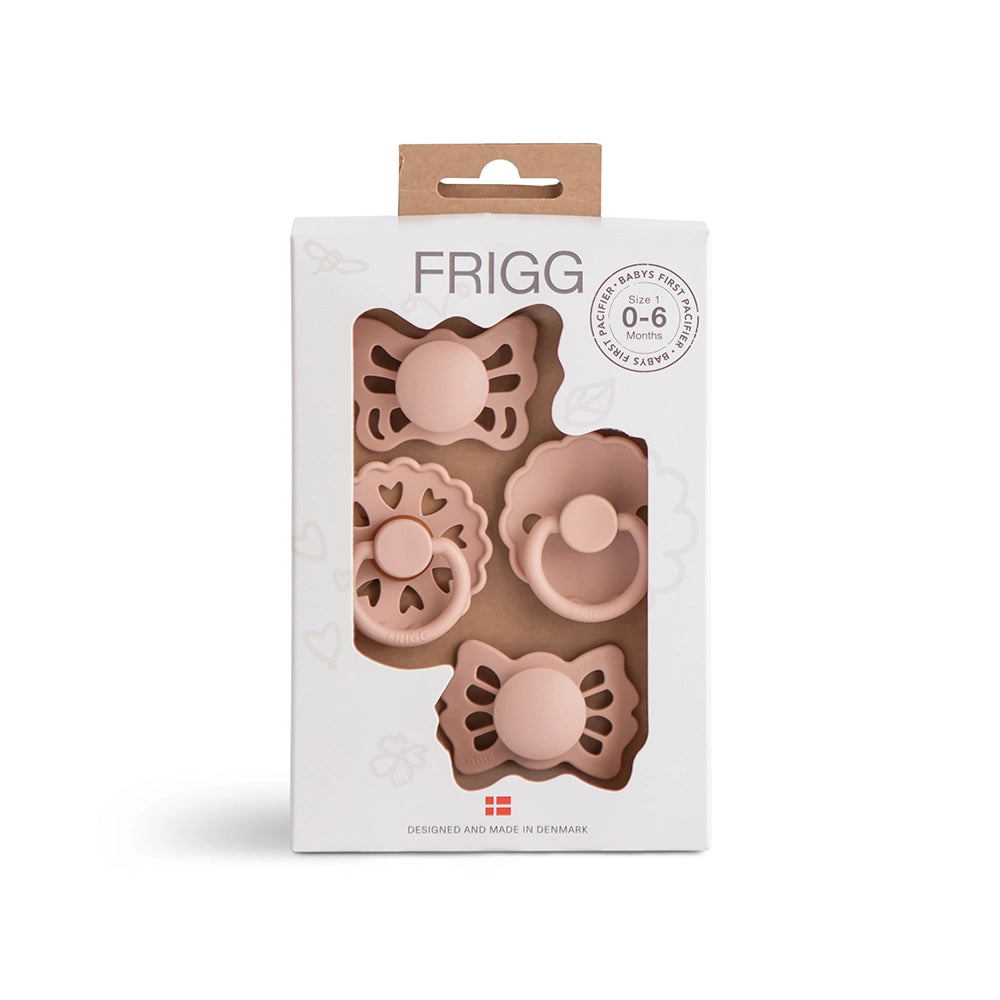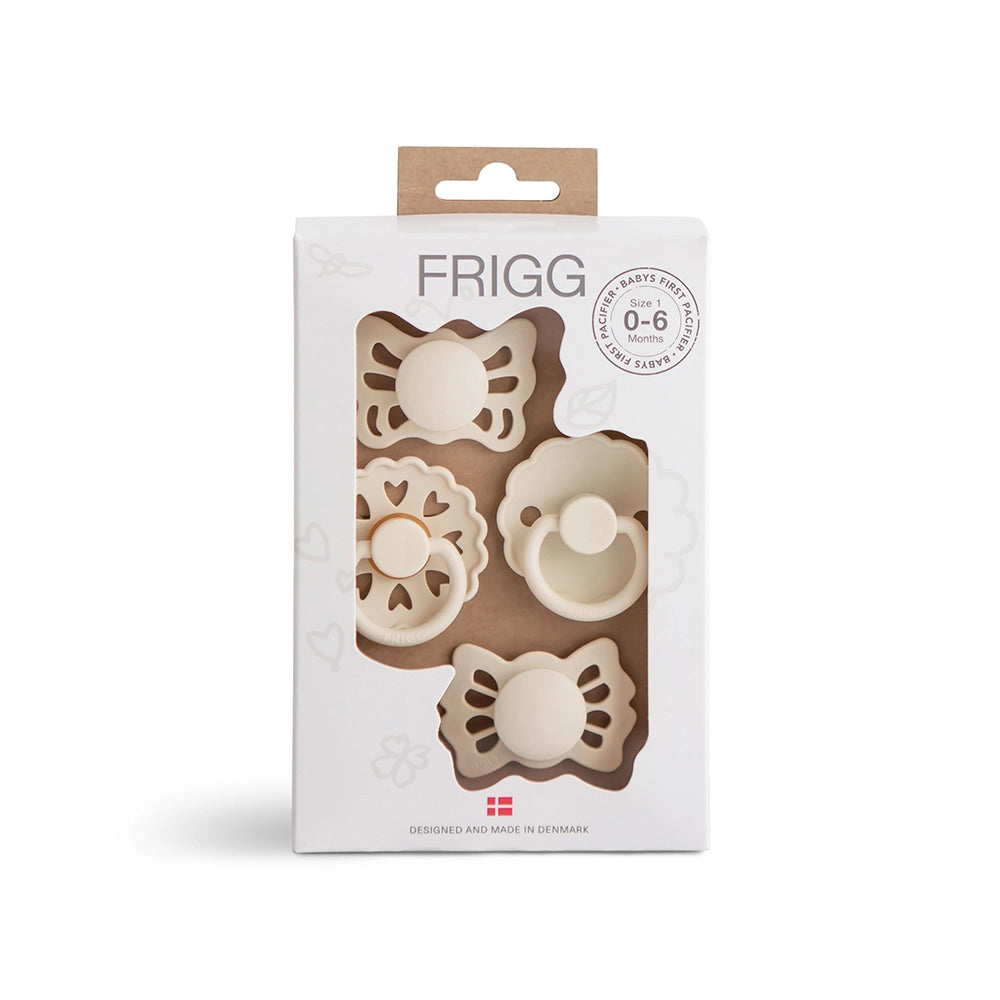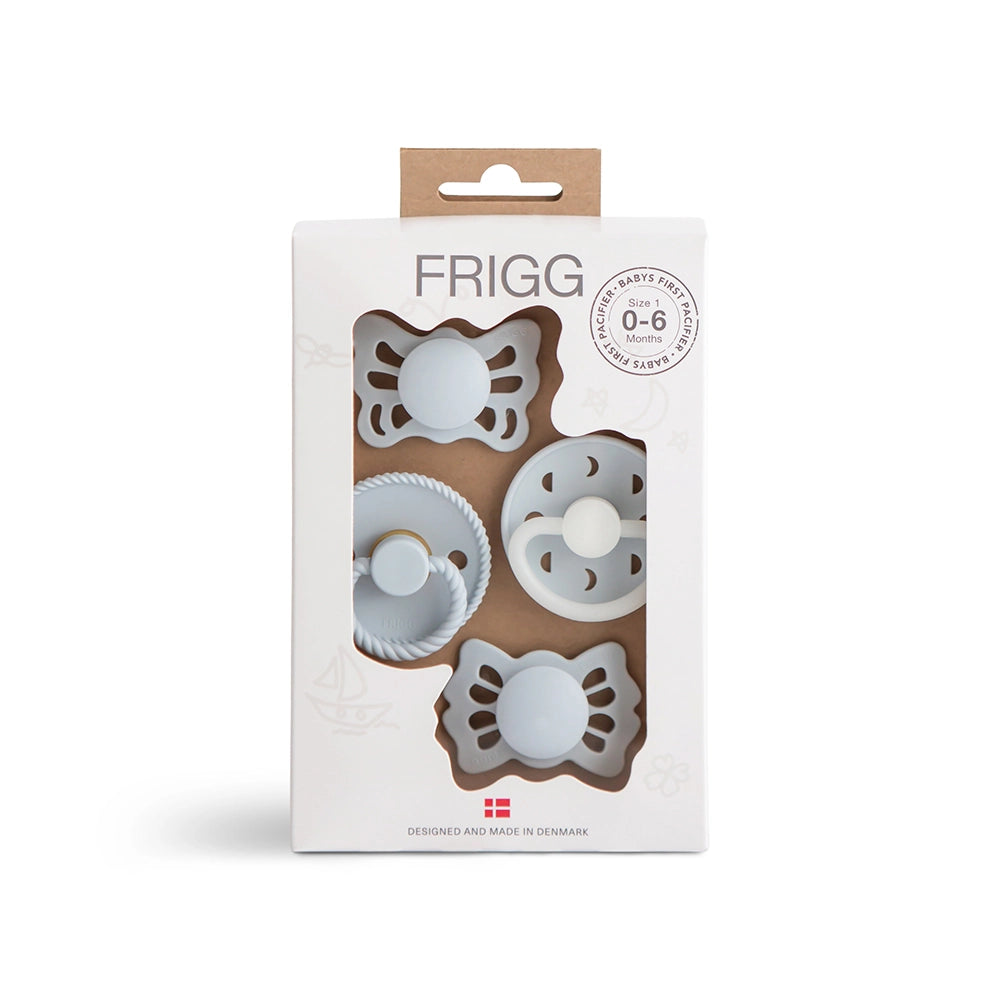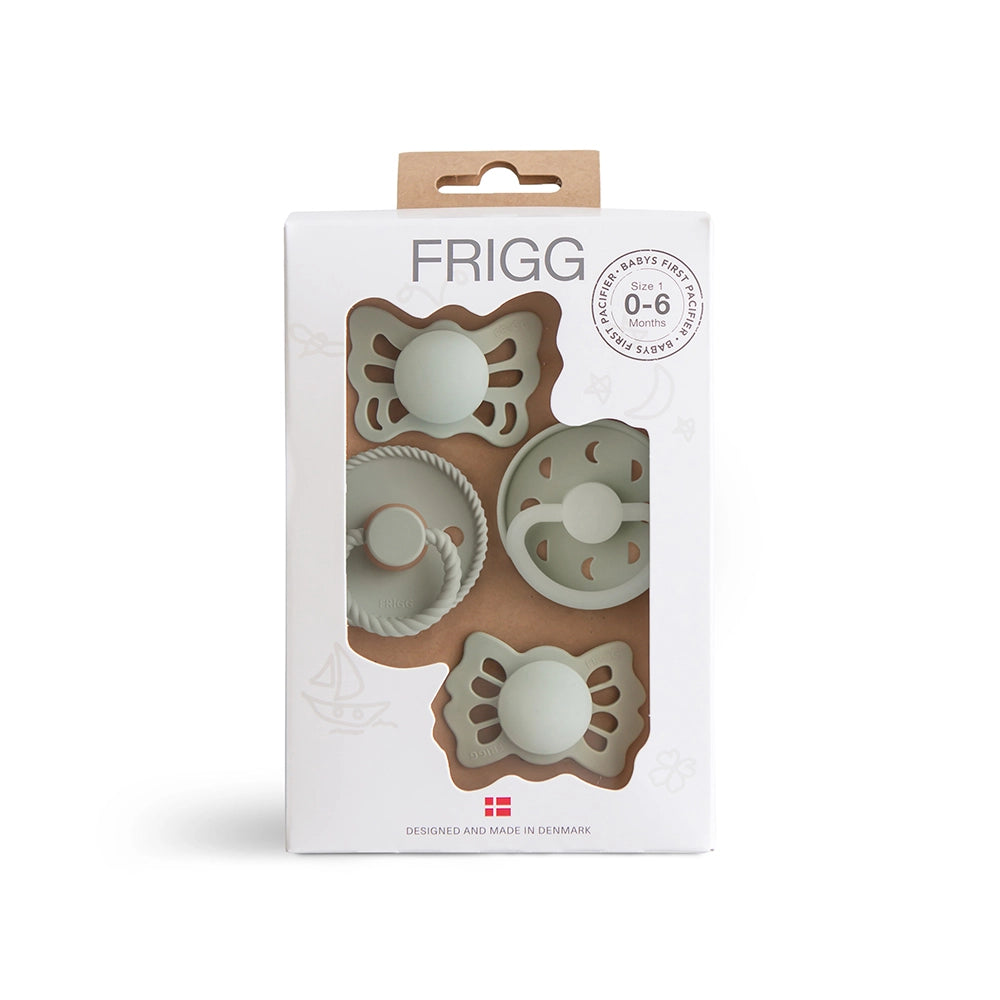Natural Rubber (Latex) vs. Silicone: Which Pacifier material is best for your baby?
It starts with a tiny sigh of relief - the moment your baby finds calm in a pacifier. That soft, familiar shape can turn tears into peace, and sleepless nights into brief, blissful pauses. For parents, that comfort matters. And so does the decision behind it.
Should you choose the warm, natural elasticity of rubber or the smooth, hypoallergenic reliability of silicone?
Here’s what you need to know to choose the material that fits your baby best.
Pacifier Materials at a Glance
Pacifiers today are most commonly made from two materials: natural rubber (latex) and medical-grade silicone. But why these two?
A brief history of pacifier materials
In the early 20th century, pacifiers were often made from glass, ivory, or early plastics -materials that were hard, brittle, and not particularly safe for little mouths. As our understanding of infant health evolved, so did pacifier design.
Natural rubber became popular for its elasticity and softness, closely mimicking a mother’s breast - making it ideal for soothing. Later, silicone emerged as a modern, hypoallergenic alternative: clean, neutral in taste and smell, and easier to sterilize.
Today, these two materials have become the gold standard in baby care - each trusted for its own unique strengths.
At FRIGG, all our pacifiers come with nipples crafted from:
-
Natural Rubber (Latex) - Soft, elastic, and harvested from the sap of the rubber tree
-
Medical Grade Silicone - Durable, transparent, and hypoallergenic
Both are trusted, parent-approved options. But they feel - and function - a little differently. Let’s explore.
Natural Rubber Pacifier - What is it made from?
Natural rubber is also called latex and is a completely natural material. Natural rubber comes from the rubber tree, whose juice (latex milk) is extracted and processed into natural rubber. Pacifiers in natural rubber are soft and elastic and can be recognized by their yellow/brown color.
Why parents love latex pacifiers
- Soft and flexible - gentle in the mouth, with a natural softness that many babies find comforting
- Naturally derived - biodegradeable and eco-kind
- Stretchy and warm - familiar in feel, which can make it especially comforting for babies used to breastfeeding
Things to consider
- Distinct scent and taste - comforting to some babies, not all
- More sensitive material - can deform by prolonged boiling or exposure to direct sunlight, as it can cause the nipple to lose shape or soften too much
- Light sensitive - keep away from sunlight or heat sources, which can dry out or weaken the rubber over time
- Avoid if there's a latex allergy in your family
Medical Grade Silicone Pacifier — What is it made from?
Medical grade silicone is the purest type of silicone and is an industrially manufactured material. Because of the purity of the material, it is often used in both the food and pharmaceutical industries. Silicone is clear and transparent and has a smooth surface.
Introducing: FRIGG Medical Grade Silicone nipple with a SilkySoft™ surface
Our medical grade silicone nipple now has a smooth surface called SilkySoft™. The nipple has been made even softer than prior, which minimizes the risk of babies developing any tension in their head and jaw. Softened silicone has proven to be a safer choice for babies’ palate and gums, due to the gentleness of the material. Babies will in fact often take a pacifier with a smooth surface rather than a rough one, which is why we have found this improvement necessary.
Why parents love it
- Hypoallergenic - ideal for sensitive babies and allergy-prone families
- Odorless and tasteless - great for picky little mouths
- Highly durably - resists wear from repeated sterilization, daily use and temperature changes much better than natural rubber
- Easy to sterilize - resists heat, bacteria and everyday messes better than latex pacifiers
Things to consider
- Firmer than rubber - may take getting used to for some babies
- Less "skin-like" feel - texture-sensitive babies may prefer a latex pacifier
Different Materials - Different Strengths
Babies have their own preferences. Some love the warm, stretchiness of natural rubber -especially if they're used to nursing. Others respond better to the smooth, scent-free silicone, which can feel cleaner and more neutral.
There’s no wrong choice - just the one that soothes your baby best.
Side-By-Side Comparison of Latex & Silicone Pacifiers
|
Feature Origin Texture Allergy Risk Scent & Taste Durability Sterilization Eco-friendliness |
Natural Rubber (Latex) Natural (rubber tree sap) Soft, stretchy, skin like Yes (if latex allergy present) Mild, natural fragnance Shorter lifespan Pour boiling water over Biodegradeable |
Medical Grade Silicone Man-made Smooth, slightly firmer No Neutral Long-lasting Pour boiling water over Not biodegradeable |
Natural rubber and silicone are 2 very different materials with different strengths and qualities.
Safety
The purpose of our FRIGG pacifier is to give the little ones a peace of mind by imitating a mother’s breast. To make it as easy and natural as possible for the baby to switch between our pacifier and a mother’s breast, many choose to try natural rubber first, because natural rubber is softer, and it is more similar to the elasticity of the skin and breast than silicone.
Allergies
Silicone is clearly the cleanest and most allergy-friendly of the two types of materials. If you have latex allergy in your family, you should choose our medical grade silicone pacifiers.
Smell and taste
Silicone is a fragrance-neutral material, whereas natural rubber has a slightly characteristic fragrance. Preference varies from child to child.
Durability
Natural rubber is more elastic than silicone, and it is harder for small baby teeth to bite into pieces. Silicone pacifiers do not age quickly, while natural rubber has limited durability. You will therefore experience that natural rubber expands and changes shape over time, while silicone retains its shape.
Storage
Natural rubber can be damaged by light and heat sources, whereas silicone can better withstand environmental impact. Therefore, it is important that you always store your natural rubber pacifiers in a dark, dry place at room temperature. Never leave them in a windowsill, where they might get exposed to sun and light.
Cleaning
The younger the baby, the more important good pacifier hygiene is, and the more often the pacifiers need to be cleaned. And in this case, silicone is an easier material to handle than natural rubber. Silicone has a smooth surface and doesn’t attract dust or dirt. As silicone has a high heat tolerance, the pacifier will not be damaged by the frequent, repeated sterilizations that good pacifier hygiene requires.
Read more about how to sterilize pacifiers in our other blog post.
All children are unique
Natural rubber and silicone each have advantages and disadvantages. There will always be divided opinions about which material is the best or the healthiest. All children are different, and in the end, your child will choose the material he/she likes the best.
? Have you noticed the four little slanting lines inside the nipple?
Some of you may wonder if these lines are a matter of a defect nipple, and the clear answer is NO. The lines are simply a part of the nipple design. We always strive to make our pacifiers stand out on the pacifier market, and that also includes our nipple design.
